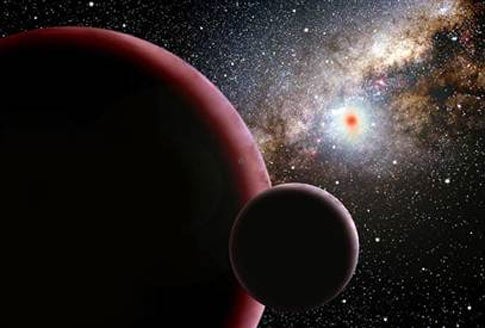In the hunt for planets outside our solar system, astronomers can employ a technique known as gravitational microlensing. Distant starlight becomes temporarily magnified when a background star aligns with a foreground object along the line of sight from Earth. Gravity from the foreground object bends the light, creating the magnification. Using this technique, a team has found a new extrasolar planet.
In April 2005, the Optical Gravitational Lensing Experiment (OGLE) collaboration, a project based at Warsaw University that is chiefly concerned with discovering dark matter using the microlensing technique, first observed the microlensed star. In May, astronomers realized the star was brightening. Worldwide observers with the Microlensing Follow-Up Network (MicroFUN), an informal collaboration dedicated to observing microlensing events, conducted hundreds of observations. This effort helped determine a planet orbited the star.
The exoplanet orbits a red dwarf star about 9,000 light-years from us and weighs about 13 times as much as Earth. This icy and rocky body is about –330º Fahrenheit (–200º Celsius), making it one of the coldest known exoplanets. While these super-Earths are fairly common, the system that houses it is rare.
“This icy super-Earth dominates the region around its star that in our solar system is populated by the gas-giant planets Jupiter and Saturn,” explains Andrew Gould, leader of MicroFUN and professor of astronomy at The Ohio State University. “We’ve never seen a system like this before, because we’ve never had the means to find them.”
The lack of gas giants in this system hints that it lacks the gas necessary for their creation. Without firm data on dominant super-Earths, astronomers can only speculate.
The astronomers submitted their paper to the Astrophysical Journal Letters for publication.










